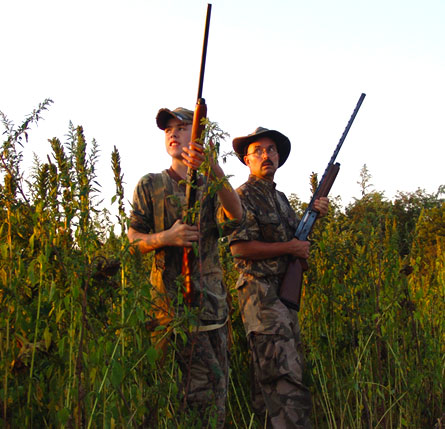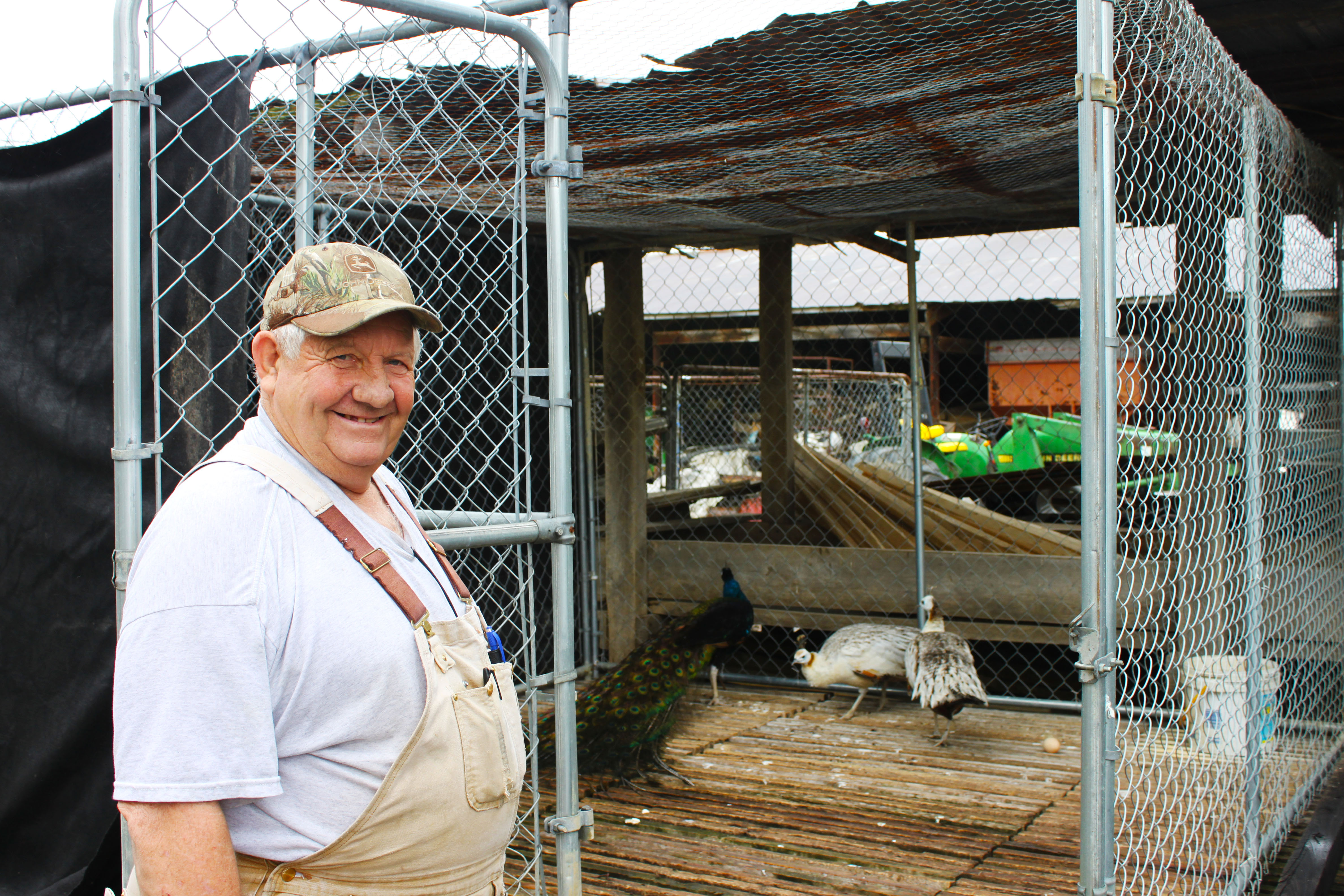August 11, 2011
Author Lee McClellan
FRANKFORT, Ky. – I remember the thrill the first time my neighbor, Mr. Goff, let me go along with the older boys on an early season dove hunt in the country around Bloomfield, Kentucky.
We rode in the back of his white Chevy step-side pickup on the country roads of Nelson County as we made our way to the field. Excitement flushed through us, the sounds of tall grass brushing the underside of the truck bed meant we were almost there. I can still see his left arm sticking out the truck window holding onto a pipe with chunks missing from the mouthpiece from too much contact with too many teeth over too many years.

He didn’t let me hunt the first couple times. I had to watch my brother and the older boys hunt from the cab of his parked truck. I beat back the boredom by furtively pushing in the clutch and running through the three gears on the steering column, pretending to drive.
I eventually graduated into helping hunters look for downed birds, then finally he let me hunt after I got my hunter education card at Camp Currie.
Mr. Goff wielded an old Fox side-by-side 12-gauge and never missed. I still marvel in my mind’s eye at his wingshooting skill and wished I could hit them like he could.
Those memories lay heavy on the mind with the Sept. 1 dove season opener just around the corner. It’s a special time in Kentucky and this September will birth a new generation of dove hunters. The outlook for the 2011 dove season is optimistic.
“We should have a good dove season,” said Rocky Pritchert, migratory bird coordinator for the Kentucky Department of Fish and Wildlife Resources. “There seems to be a lot of doves around the state.”
The heavy rains this past spring brought widely variable field conditions across Kentucky. Scouting a potential field now pays dividends with better hunting in September.
“The amount and timing of the spring rain impacted field planting,” Pritchert explained. “Some fields are in excellent shape and some fields had to be planted later.”
Kentucky hunters will have more places to dove hunt this fall as the number of private dove fields enrolled in the Cooperative Dove Field Program more than doubled this year. These fields in combination with public fields on wildlife management areas give Kentucky hunters more than 50 dove fields to enjoy across the state.
“There should be more fields next year,” Pritchert said. “We had 10 or so that couldn’t get a crop in from the weather, so they had to pull out of the program.”
My brother and I were lucky that Mr. Goff had access to good fields to teach us dove hunting. Kentucky adults who want to introduce a youth to quality dove hunting have the Mentor/Youth hunts on Sept. 3. A mentor may take up to two youths hunting and are assigned a shooting location. Both the mentor and youth may hunt, but each shooting location is limited to two shotguns and two daily limits of 15 birds. Slots are still available and you may reserve one by calling 1-800-858-1549 before Aug. 22.
The wet spring means fields sown in sunflowers, millet or other grains offer better early season hunting than fields grown for silage.
“By mid-September, farmers will begin cutting silage,” Pritchert said. “The heavy spring rains could extend good hunting opportunities later in the season than usual.”
For early season dove hunting, refrain from using too much choke. A 12- or 20-gauge shotgun loaded with number 7 ½ or 8 shotshells will bag plenty of birds. After the first few weeks of the season, birds grow weary and fly high and fast. A modified choke will suffice for the mid season. A full choke should only be used for the long pass shots needed in late season hunting.
Keep checking the fields you hunted in early September. They may seem hunted out, but as hunters lose interest after the first couple of weeks of the season, those fields may get hot again.
“Fields that seem shot out often get new birds migrating in from the north,” Pritchert said. “While you may not see waves of birds, you often get a steady enough stream of birds for good hunting.”
Pritchert recommends full-body camouflage clothing and placing dove decoys in and near the field for better late season hunting.
“They grow increasingly wary as the season progresses, especially the birds migrating in from the north,” he said. “Decoys can really help later in the year.”
A dove hunter must possess a valid Kentucky hunting license and either a Kentucky migratory bird or waterfowl permit. Those who plan to hunt both doves and waterfowl should buy the Kentucky waterfowl permit. The resident Sportsman’s License includes all licenses and permits needed for dove hunting.
For more information on dove hunting and available public fields, consult the 2011-2012 Kentucky Hunting Guide for Dove, Wood Duck, Teal, Woodcock, Snipe and Crow available wherever hunting licenses are sold. You may request a copy by calling 1-800-858-1549 or print one from the Kentucky Fish and Wildlife homepage at fw.ky.gov.
-30-
Contact: Lee McClellan
1-800-858-1549, ext. 4443
The Kentucky Department of Fish and Wildlife Resources manages, regulates, enforces and promotes responsible use of all fish and wildlife species, their habitats, public wildlife areas and waterways for the benefit of those resources and for public enjoyment. Kentucky Fish and Wildlife is an agency of the Tourism, Arts and Heritage Cabinet. For more information on the department, visit our website at fw.ky.gov.




Be the first to comment